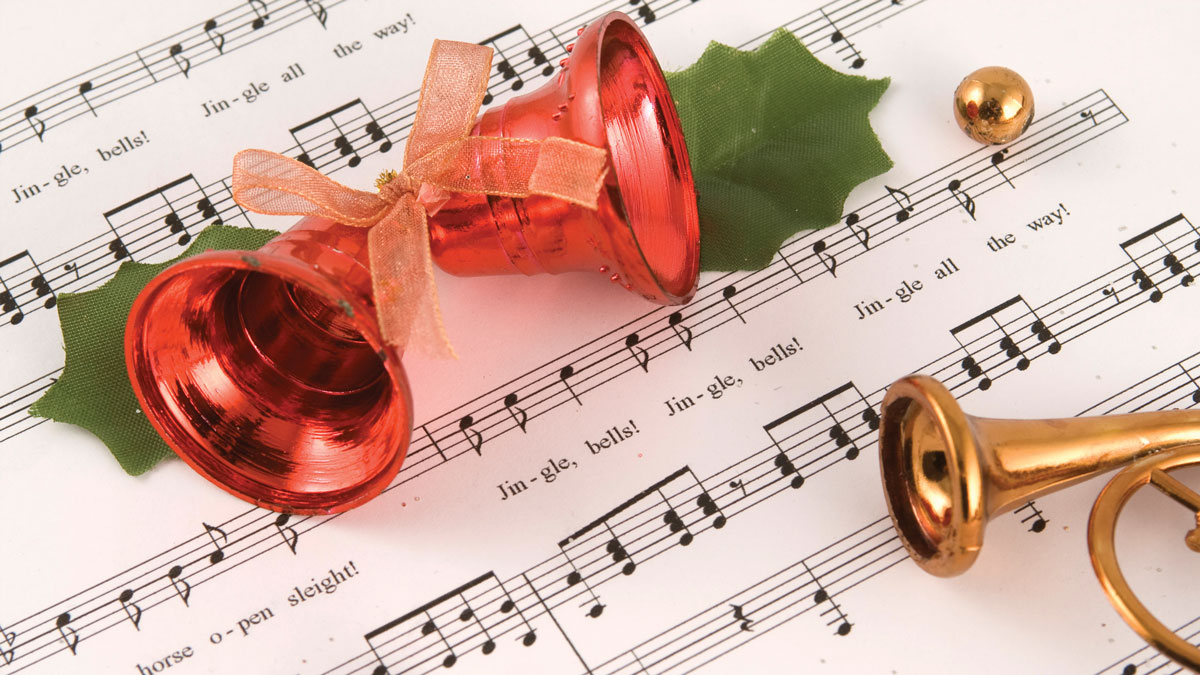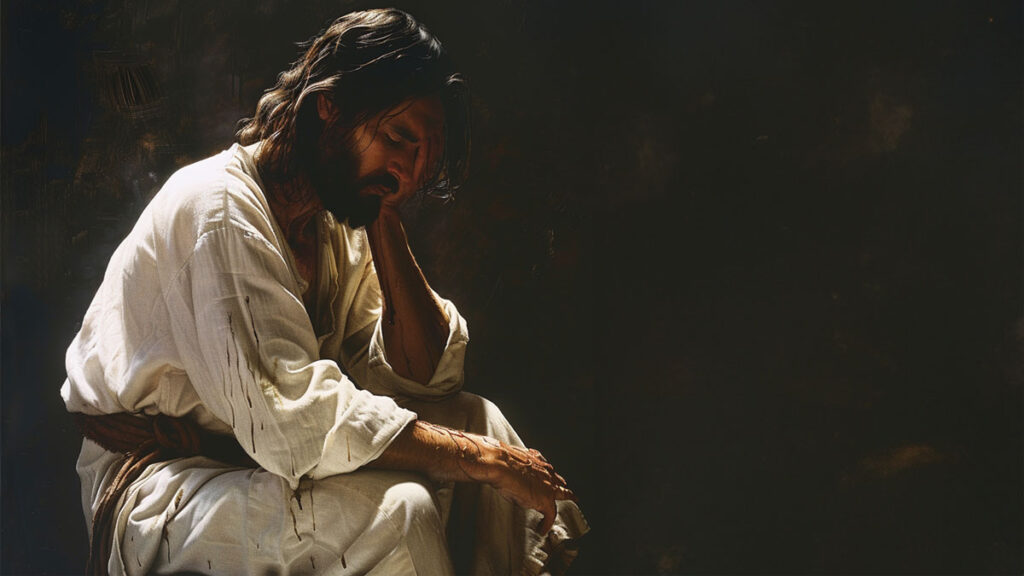Do you jingle?
You might have a little giggle at me asking that weird question or think it quite bizarre or nonsensical to ask. And you’d be right—it is a very silly question to ask.
But nevertheless . . . when the Christmas season comes around, do you jingle like Christmas bells?
One of the most well-known and unavoidable Christmas songs played everywhere you go around Christmas time is ”Jingle Bells”. When I used to work in retail, this song would play over the speaker system . . . Every. Single. Day! I wasn’t too bothered by it, but my colleagues were driven half-mad having to listen to this song day after day, week after week and month after month. This song, above all other Christmas songs, would get stuck in your head and continue playing through your mind even after you left the shop.
But where did this idea of ”Jingle Bells” come from?
The history of bells being associated with Christmas comes from the Middle Ages when the largest building in any city or town would traditionally be the church, a majestic building carefully designed and constructed to overlook the surrounding landscape with grandeur and authority. And within the towering steeples of each church would hang a bell, or multiple bells, which would ring out loudly and harmoniously across the land. The use of bells in church steeples was first introduced in around AD 400 and adopted on mass scale into churches during the sixth century across much of Europe. Church bells were so highly revered that numerous books and rules were created to govern when and how bells could be rung. It even became a professional career!
But these church bells were not decorative or frivolous in their purpose. The church bell would serve as an announcement system for the whole community, notifying people of important events, such as births, deaths and weddings; as well as warning the community of dangers like storms or invaders. Most notably, church bells would be rung to announce religious commemorations, like Easter and Christmas. The bells would ring out at midnight every Christmas Eve to herald the beginning of the holy day, Christmas Day. It is from this tradition of ringing bells at midnight that this idea of jingle bells arose and developed into the well-known Christmas emblem. Unfortunately, however, this Christmas emblem has been morphed over the decades and centuries to be more strongly associated with Santa’s sleigh rather than the church.
But back in the day when the church was the centre of the community, very few churches were without bells. This was because without a bell, the church could not serve its purpose in the community. It could not warn the community of danger, announce celebrations, bring people together for worship or herald in Christmas Day. A church without a bell was essentially useless.
It is the same still today. A church which does not ring out and announce to its community important spiritual events, warnings and reasons for celebration, is essentially useless.
Now, I absolutely love Christmas. I’m one of those Christmas nuts who listen to Christmas music a bit too early (this year it was May!) and have the Christmas decorations up as soon as possible. Currently as I sit at my desk at work, I can spy two Christmas trees (which I set up), fairy lights, tinsel, bonbons and miniature duckies wearing Christmas hats. I love wandering through the shopping centres, munching on festive treats, marvelling at the magic which shopkeepers bring to their stores and hunting the streets for Christmas lights. I think it is safe to say that I’m a Christmas addict.
But it isn’t necessarily Christmas Day which I love. I have had my fair share of Christmas days which I would rather forget, as I am sure many of you have. No, it isn’t necessarily the day that I get excited about. Instead, it is the season leading up to Christmas which I can’t get enough of. There is just something special about the Christmas season which other times of the year simply cannot capture—a certain bubbling excitement, a sense of relentless optimism and a tenacious tingling of joy.
People’s hearts become lighter because they have something to look forward to. They are surrounded by loved ones who all smile more, laugh more and marvel more at the world around them. People become more grateful and thankful at Christmas as gifts are exchanged. They become kinder and more generous as they give donations to worthy causes at this time of year. While this may not be true for everyone at Christmastime, it is safe to say that the Christmas season nevertheless embodies the concepts of love, joy, peace, patience, kindness, goodness, faithfulness, gentleness and self-control. Okay . . . maybe not the last one (especially when it comes to Christmas foods!). But all the other fruits of the Spirit rise and shine in people’s hearts during the month of December.
But what is the reason for these qualities emerging at this time of year? We live in an increasingly secular world where Christmas is more often associated with Santa, presents, family, food and cheesy Hallmark movies than it is with the birth of Jesus Christ. And yet the fruits of the Spirit remain steadfastly present in the Christmas season. Why? I believe this is because of hope. In all these emblems of Christmas—the family, food, lights, presents, fables, stories and Christmas carols—there is an irrepressible undercurrent of hope. All these Christmas festivities remind us that it is possible to experience a better existence, one filled with good tidings and cheer, and our hearts are once again filled with hope that perhaps the year ahead might remain as joyful as Christmastime.
Now like I mentioned, I’m a bit of a Christmas addict. And as with most addictions, when the “high” comes to an end—when Boxing Day finally comes around and the Christmas tree is packed away—what remains are feelings of disappointment, confusion and dejection. A real blue funk comes over me and I become grumpy and annoyed that Christmas is over. In fact, according to a 2015 survey, around 64 per cent of people experience post-Christmas blues! This is where individuals feel anxious, depressed and disappointed when the whirlwind of Christmas ends.1
The feelings of hope and joy which we experience during the Christmas season do not last. We fall from our euphoric state of bliss and land hard in the reality of pressures, demands and the tedium of life. No longer are there any shiny Christmas lights, baubles, festive carols or presents to look forward to which can muffle out the noise of life’s trials. Our reason for hope is gone, only to be replaced by feelings of disillusionment and despair.
Interestingly, however, this experience of post-Christmas blues is less pronounced in Christians compared to non Christians. Research has indicated that Christian religious affiliation is a protective factor against a general decline in subjective wellbeing during Christmas and the post-Christmas period.2 In other words, the happiness of those who believe in Jesus does not decrease after Christmas ends.
The reason? Christians have a reason for hope which lasts beyond Christmas Day. Although Jesus is the ”reason for the season”, He is also the reason. Full stop. He is the reason for our hope, our joy and our delight. I mean, without Him we wouldn’t even have Christmas! We wouldn’t have gingerbread houses, presents, Christmas carols and the immense source of hope and joy which Christmas brings—we would have nothing without Jesus.
So now I return to the question—do you jingle?
As Christians, we have been given a glorious gift of unending hope to proclaim to our communities and to those we do life with. We have a marvellous hope which lasts beyond Christmas because we have a Saviour! We know firsthand that life doesn’t have to be filled with disillusionment, disappointment and despair, such as we see after the euphoria of Christmas ends. Instead, life can be filled with the joy, hope and peace of “Christmas” all year long.
We are the bells in our communities and we have a life-changing announcement to share. So, are we jingling all the way?
1. Luna Greenstein, “Tips for Managing the Holiday Blues” National Alliance on Mental Illness (Website, November 19, 2015) <www.nami.org/blogs/nami-blog/november-2015/tips-for-managing-the-holiday-blues>.
2. Michael Mutz, “Christmas and Subjective Well-Being: A research note” Applied Research in Quality of Life (November 13, 2015).
Olivia Fairfax is an editorial assistant at Adventist Record.






